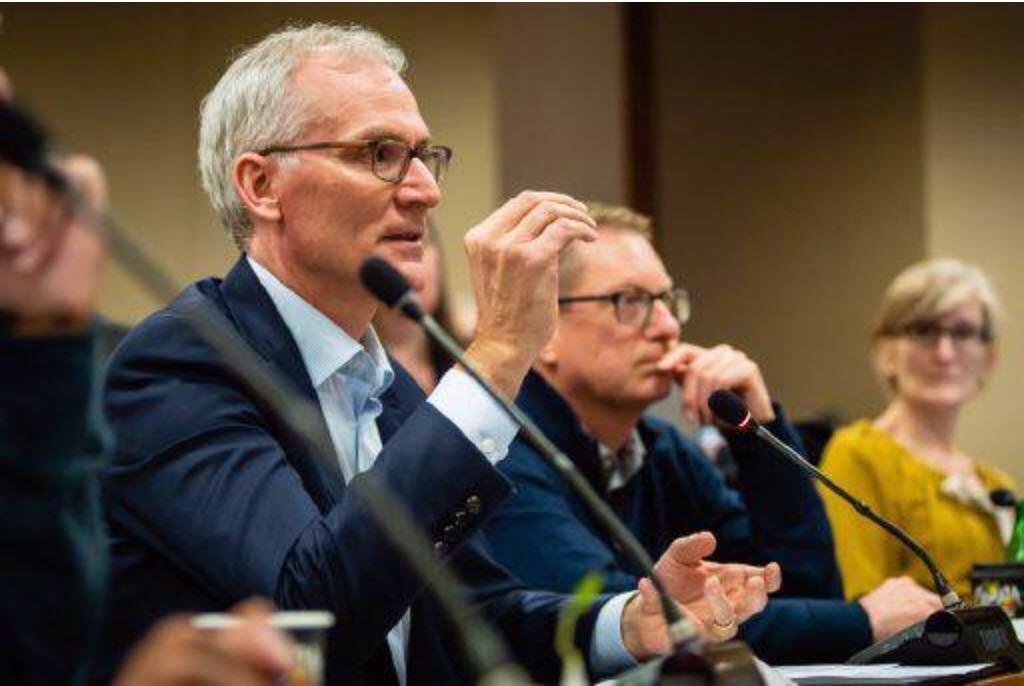The University could soon introduce two new teaching-focused professorial ranks and a host of other ranking changes, designed to increase flexibility and keep Stanford “at the forefront of advancing theory, practice and research.”
The rankings come from the Committee on the Professoriate, which makes recommendations for the Academic Council’s Articles of Organization and for faculty and academic staff handbooks. The Articles of Organization and handbooks outline rules by which the Faculty Senate must operate.
The proposal, presented by co-chair and physics professor Patricia Burchat at Thursday’s Faculty Senate meeting, calls for the creation of the “Assistant Professor (Teaching)” rank and an additional level in the Lecturer line. The additional lecturer rank would most likely be designated as “advanced lecturer,” said computer science professor Mehran Sahami ’92 M.S. ’93 Ph.D. ’99. Open to core lecturers who meet departmental criteria, this rank would enjoy longer terms of service and higher security of employment. Sahami emphasized that senior lecturer — the highest lecturer rank — and advanced lecturer are distinct roles with differing responsibilities, and that advanced lecturer is not just a step toward becoming a senior lecturer.
Robert Weisberg, law professor and committee co-chair, proposed that center fellows with an appointment in a designated policy institute be members of the Academic Council, thus granting them principal investigator (PI) privileges and the right to serve as principal thesis advisors. Weisberg also recommended that the standards and procedures for promotion to or appointment as senior fellow be consistent with those for the position of tenured associate professor or tenured professor.
Burchat concluded the presentation with the idea to eliminate the clinical, applied research and performance designations for associate professors and professors. She also suggested, but did not motion, that designated policy institutes be allowed to make appointments with the title “Professor of the Practice.”
The majority of the faculty in the audience agreed with the committee’s recommendations.
“Every time the University ties its hands and doesn’t allow the kind of flexibility that this plan gives us, it ends up being sorry,” said John Etchemendy, a philosophy professor and former provost. “This is what should have been done back then.”
All of these recommendations are motions that will be voted upon in two weeks.
At the meeting, University president Marc Tessier-Lavigne also provided an update on Stanford’s response to the coronavirus outbreak, echoing statements he has made at previous town halls. Stanford’s Public Health Policy Committee, he said, meets “pretty much daily to assess the situation and guide the University’s response.”
Tessier-Lavigne asserted his “firm commitment to [respecting Stanford’s] international community” and emphasized that the University’s belief in the “importance of sharing ideas across borders has not changed” despite the current precautions in place.
“Our Chinese and Chinese-American students, scholars and staff are an important and vital part of the Stanford family,” he said. “It’s very important that we extend our support and respect to all members of those communities and that we avoid scrutinizing anyone based on race, ethnicity or national origin.”
Currently, the University is restricting all travel to China, with exceptions allowed on a strict approval basis. In addition, anyone who has returned from China within the past 14 days is asked to self-isolate until 14 days have passed.
The meeting also featured a tribute to Trish del Pozzo, former academic secretary, who passed away in September 2019. Memorial resolutions were also presented for Nils Nilsson, professor emeritus of Engineering, who died in April 2019 and Calvin Quate, professor emeritus of Applied Physics and Electrical Engineering, who died in July 2019.
Contact Max Hampel at mhampel ‘at’ stanford.edu.
